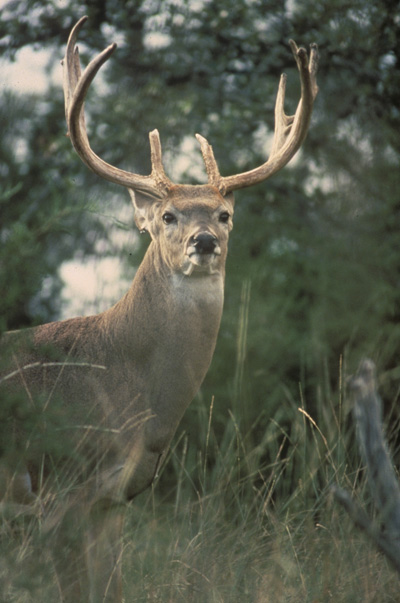by John Jefferson
I try to keep this column on the high road. Sometimes, though, it runs off into the ditch. I hope readers can understand its purpose, dark though this might seem.
Drought and winter weather take tolls. Disease does, too. I came upon a deer on the ground well-after the season. I won’t describe it. It looked up at me helplessly. A TPWD biologist said it sounded like stomach worms.
Worse was what the screwworm did to Texas deer and cattle in the 1950s. Thousands of cattle and probably more deer than that died a slow death — having their heads eaten while alive. Exact numbers weren’t available; deer died in the brush undetected. One estimate was that 80% of the fawn crop died.
I came upon a dead deer hung in the fence, once. I wondered if I could have saved it, had I noticed it sooner. Fast forward to a deer lease I managed in the ‘90s. Doing a TPWD-sanctioned spotlight deer survey, a small buck jumped over onto our lease in front of our headlights. Seeing us, it jumped back across the fence. But only half-way. As often happens, its hooves went through the strands as its body went over, hanging it in the fence. Its head hit the ground on the other side. Struggling with the twisted barbed wire, we finally released it. Our fruitless efforts to revive it continued into the next morning. The game warden told us the trauma had been too severe, and to end it mercifully. Deer seldom, if ever, survive that.
Coyotes, mountain lions, and perhaps bobcats kill deer and fawns year around for survival. A game manager in Dimmit County told me he saw coyotes chase down a mature deer and begin eating it alive — starting at its rear.
As a kid, I saw something I can’t forget. At an old, weathered farmhouse, blood was sprayed along the house in places, perhaps from a torn artery. Bloody weeds were trampled in several places, indicating a brutal battle. There were no remains. They figured a cougar had probably attacked a deer or hog and carried it away after the kill.
Whatever it was died painfully. Usually unseen, it happens somewhere every night in Texas. Survival of the fittest is Nature’s way.
Another time, we saw a car hit a deer one afternoon. The deer, struck broadside, slid about 20 yards, sideways. We pulled it out of the roadway. Two women drove up behind me and insisted I take it to a vet. But it was too late — massive internal injuries.
Texas has around five million deer – a severe overpopulation in many places. That’s one cause of auto-deer accidents. A game biologist estimated as many deer are killed by vehicles as by hunters. Partly Nature-made; partly human-caused.
But we can reduce Nature’s part. The antlerless deer season ends Jan. 17 in the north zone and Jan. 31 in South Texas. Hunters are encouraged to remove as many does as possible.
JJ





